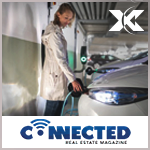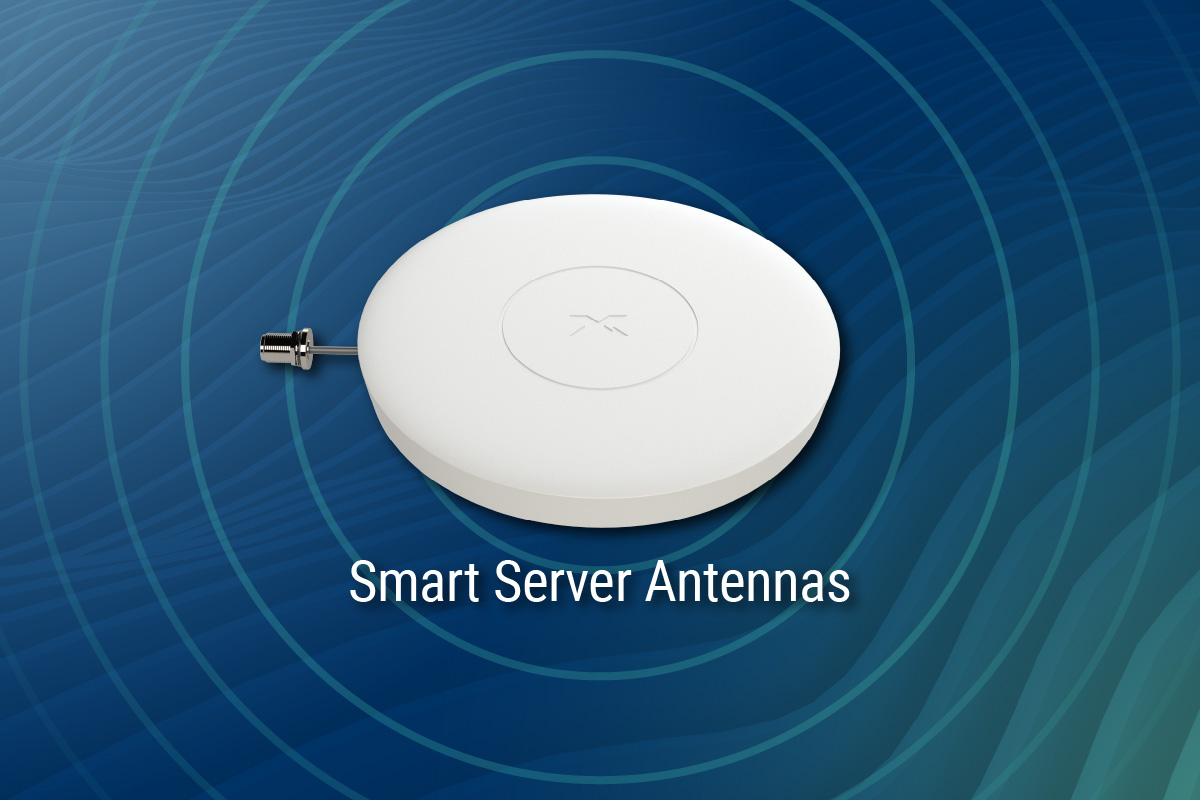As more Americans switch to electric vehicles (EVs), adding EV charging stations to parking facilities can be a big draw for retail, commercial, and residential properties. But there’s more to how these stations operate than meets the eye. Unbeknownst to many, EV charging stations need reliable cellular connectivity for remote monitoring, payment processing, and more.
“When you plug in your car to charge it, you swipe a card, enter a code, and log into a system to book and sometimes pay for a charge. This is the way manufacturers of these EV charging systems monitor which stations are being used, how often, and how many units of power are being charged on the unit in a day or a week. That communication happens wirelessly through cellular frequencies,” explains Marcus Carstens, business operations lead at Irvine, CA-based Waveform, experts in cellular signal boosting.
“In the early days, there was a lot of playing around with Wi-Fi, but cellular was found to be more reliable because it currently exists everywhere. It might not always be strong, but it does exist,” he adds.
Addressing poor cellular coverage in parking structures
Cellular technologies have advanced significantly, but construction materials, urban environments, and underground locations often weaken and block cellular signals in many parking lots and indoor parking structures where EV charging stations are installed. Carstens recommends a reliable cellular signal booster that is powerful and flexible enough to overcome the challenges posed in both outdoor and indoor environments.
For example, when there is poor cellular signal to EV charging stations located in areas that are 15,000 to 30,000 sq. ft. – whether it’s an outdoor parking lot or indoor parking structure – Waveform recommends the CEL-FI GO Smart Signal Booster to deliver the cellular amplification because it boosts the signal 1000x greater than other solutions on the market, can be placed indoors and outdoors, and is NEMA 4 rated so it will withstand harsh conditions like dust and water exposure.
There are different levels of difficulty when bringing cellular connectivity into outdoor or indoor parking facilities for EV charging stations.
“A parking lot becomes trickier because it’s all outdoors. That’s where the CEL-FI GO is really great, because it is waterproof. Our installation partners often just mount the GO somewhere inconspicuous like behind a ground mounted AC unit,” says Carstens. “We’ve also seen instances where GO was mounted to the same pole that the donor antenna is on.”
Carstens also thinks CEL-FI GO offers a future proof solution for parking facilities that are planning to add more EV charging stations in the future. “These stations aren’t sending big amounts of data. It’s really tiny bits of data trickling up and down. So realistically the GO could probably service 50 or so stations. You’re going to hit limitations on how many fit into an area before you reach the maximum of how many the GO can actually support.”
Cellular coverage is for more than just EV charging stations
Cellular connectivity in parking facilities can also alleviate public safety concerns. Take the example of a large national U.S. builder that needed to ensure there was reliable cellular coverage throughout a 20,000-square-foot parking garage in the lower and sub-ground levels of a multi-use building with retail spaces and apartments.
Cellular connectivity was needed for six ChargePoint EV charging stations installed on the first level of the garage for apartment tenants, and another six which were planned on the second floor parking for residents. Cellular connectivity had to cover all the major carrier networks to alleviate communications and safety concerns for residents and retail customers while in the garage. The building’s construction materials and urban environment, as well as an underground location, were obstructing cellular signals in the parking garage.
According to Mike Bozyk, co-owner of Minneapolis-based KonectaUSA, a leading commercial in-building installation and service provider in North America, his team was hired to cost-effectively bring cellular coverage into the parking garage and designed a solution that features CEL-FI QUATRA, an active DAS hybrid that delivers uniform in-building cellular coverage for 3G/4G/5G voice and data.
CEL-FI QUATRA specifically addresses the challenges of poor voice quality, dropped calls, and dead zones in large commercial facilities and, like the entire CEL-FI product line, delivers a signal that is up to 1000x stronger, offering a much larger coverage footprint. QUATRA uses category cabling with Power over Ethernet, so there is no need to install additional power outlets for the internal remote antennas.
Picking the right solution
When evaluating solutions to boost cellular connectivity for EV charging stations in parking facilities, consider the following factors:
• Does the solution work for both indoor and outdoor applications?
• What is the actual coverage footprint of the system (not just the specifications)?
• Is it easy to install?
• Is it a network safe, carrier grade solution?
• Is it future proof?
Understanding the role of cellular connectivity in enabling EV charging stations and getting answers to these questions are great first steps in determining the best solution to meet the needs of a parking facility for today and tomorrow. For more information, download “Cellular Coverage is Essential for EV Charging Stations in Parking Lots and Indoor Structures”.
A version of this article was originally published by Connected Real Estate Magazine.




